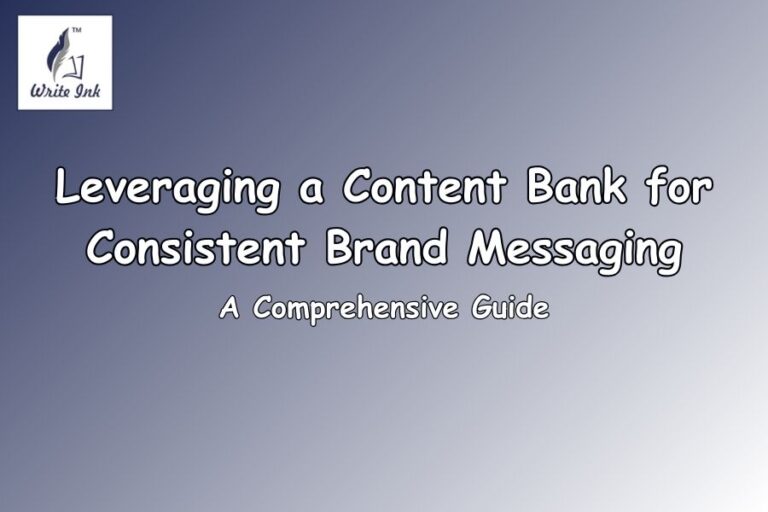As you have landed here and are reading this, we believe you either have a well-set digital business or want to build one soon. In both cases, our guide to content strategy in digital marketing aims to help you. By now you would be very well aware of the fact that simply having an online presence is not sufficient to reach the echelons of digital success. You must produce and publish relevant and exciting content that aligns with the goals and objectives of your audience.
How do they do that? By creating a content outline—content strategy in digital marketing. Let’s discuss it in detail here.
What is a content strategy in digital marketing?

In its simplest form, a content strategy is a blueprint that lays out everything from planning content to creating, publishing, and monitoring it in the digital arena. Brands invest heavily in a content strategy to build a lasting relationship with their target audience.
As per research by Forbes, content marketing increases lead generation for 74% of the companies reviewed. And when content marketing efforts are backed and supported by a well-drafted strategy, the win rates and conversions rise further.
Importance of Content Strategy in Digital Marketing
The success of your digital marketing depends on a fool-proof content strategy. A well-defined content strategy will channel your efforts, time, and resources in the right direction and bring you the desired ROI. Here are a few points that explain the need for a content strategy in digital marketing:
- It adds focus and goal to your content efforts.
- It helps you define and understand your target audience so you can create personalised content for them.
- With a strategy in place, you always know what kind of content to produce.
- The content plan helps in content distribution and content optimisation.
- Finally, it lays down a list of KPIs and metrics to measure the success of the content strategy in digital marketing.
Are you now wondering how to create a winning content strategy in digital marketing? Well, here is our ultimate guide that has come to your rescue. The guide aims to cover:
- A detailed understanding of content strategy
- Setting content goals and objectives
- Audience research and segmentation
- Content Planning and Creation
- Content distribution and promotion
- SEO and content strategy
- Content optimisation and analytics
- Social media and content strategy
- Content personalisation and automation
- Case Studies and Examples
- Future Trends in Content Strategy
Let’s start understanding content strategy and its various components in detail here.
Understanding Content Strategy

We have already touched on the concept of a content strategy in digital marketing. It is a blueprint, a layout that helps you decide what content to create, how to make it, what types of content to create, how to publish and promote it, and finally, how to measure it to discover the results and outcomes.
Key Components of a Content Strategy
You should consistently create high-quality content for your audience, and the success of your content lies in the following essential components:
- Searchable Content: One of the most essential components of your content strategy is creating searchable content. SEO plays a crucial role here and is an integral part of your content marketing plans.
- Readable Content: Once you ensure that your content is searchable, the next ingredient is readable content. Present easily read and well-structured content to your audience.
- Actionable Content: When you draft your content strategy, your aim is to convert as many users as possible. Create content that motivates your readers to take action.
- Shareable content: Finally, your content strategy should address how your users can share your content. Create content that people love to share through social media, etc.
The Role of Content Strategy in Digital Marketing
Content strategy is a roadmap and a guide to channelling your content as well as your digital marketing efforts. Your content strategy joins the puzzles to create a well-structured outline that helps you design content for the entire buyer’s journey while aligning with your business goals.
Content strategy is a comprehensive practice of planning for the creation, delivery, and governance of useful, usable, and effective content. Creating content is an essential part of an overall digital marketing strategy. When we create, produce, and publish content that aligns with our audience’s goals and objectives, we increase our sales and revenue. The aim of content strategy in digital marketing is to accomplish the broader objectives of the entire digital marketing campaign.
When the content plans are laid out well in a structured strategy, the digital marketing efforts bring results as desired.
Now that we have gone through what content strategy is in detail let us discuss how to create a detailed content strategy in digital marketing. Check out the sections below:
Setting objectives and goals

The first step in formulating a content strategy in digital marketing is to identify your business goals. Sit with your team, brainstorm, and determine what you want to achieve by creating content. The clearer your goals, the better your content strategy will be.
Some of the potential goals of your content strategy may include:
- Become a market leader in your industry.
- Increase your organic traffic by 50% by the end of the quarter.
- Increase your sales revenue by 30% by the end of the year.
Your content strategy shapes its structure based on the content marketing objectives. As you have outlined your content marketing objectives, the next step is to align your content strategy with your business goals. When you have your business goals noted down, all your content marketing efforts should work to achieve those goals and objectives.
Finally, the last step here is not only to define and set your goals and objectives but also to fix KPIs and metrics to measure success. Some of the popular KPIs to measure the success of a content strategy in digital marketing are:
- The amount of organic traffic your website generates.
- Open rates of your emails.
- Click-through rates of your social media.
- Leads because your business thrives on leads.
Audience Research and Segmentation

- Who are you creating your content for?
- What are their dreams and aspirations for a brand?
- Where do they belong?
- Where would they like to read your content?
Do you think your content strategy should include answers to these questions? Yes, if you answer them, you are a step closer to knowing your audience. The success of your blog, article, whitepaper, or social media content depends on who reads it, what actions they take after reading it, and whether they will come back to read more or simply turn it down. That explains the importance of knowing your audience.
While audience research and segmentation are essential, let us tell you some ways to discover your target audience:
- Understand who would want to use your product or service, where he stays, what age group he belongs to, what his gender is, and so on. Once you discover this, you have an ideal buyer profile that helps you create specific content for them.
- Once you have a few ideal buyer profiles, the next step is to segment them and create targeted content for better conversions.
Content Planning and Creation

You have defined your content marketing goals and objectives, and you have an ideal buyer profile set right. Now, it is time to plan and create content that connects. Here are the steps you should follow:
- Developing a Content Calendar: Create an online content calendar that will help you produce content each month and schedule distribution properly. A content calendar plays an instrumental role in keeping your content organised and accountable.
- Types of Content (Blog Posts, Videos, Infographics, etc.): After you create your content calendar, you should decide what types of content you should be creating. Keep a date fixed for blogs, infographics, social media posts, YouTube videos, and so on.
We know so many things in the content strategy in digital marketing can overwhelm you, but don’t worry, here are some steps to create high-quality content straight from the minds of our creative writers:
- Write with the intention of informing the audience and not pushing them into purchasing.
- Use references and statistics to explain your point well.
- Make use of interactive content that helps to increase engagement.
- Follow the KISS rule and make your content simple to read and understand.
- Structure your content well.
Let us touch on a few content creation tools that will help you ensure that your content is error- and plagiarism-free:
- Use Grammarly to edit your content after it is ready. It helps to improve grammatical errors.
- Use Hemingway to find your reading score and improve it. It shows you if you have used hard-to-read sentences so you can identify them and break them down into simpler ones.
- You can utilise Copyscape to reduce plagiarism in your content.
- Ahrefs, SEMrush, and Google Analytics to write SEO-optimised content.
Content distribution and promotion

Once your content is created and ready, you want to publish it for your audience to read.
You should carefully choose your content distribution channels, such as social media, email, website blogs, and so on. The detailed audience research will come to the rescue. The segmentation will tell you when and where your audience is the most active. Use your data and audience research to distribute your content.
You can follow some of our content promotion strategies to ensure that you successfully distribute your content across the web:
- Publish your content consistently.
- Try to repurpose your content.
- Along with creating organic content, relying on paid ads isn’t a crime.
- Ask your employees to connect with your audience personally on social media.
- Publish your guest’s posts strategically.
- Tap into partnerships with social media influencers.
SEO and content strategy

You are creating content as per the strategies laid down, but your content will not taste good until you add a special ingredient called SEO. SEO stands for search engine optimisation, and you can optimise your content using keywords and other algorithms followed by various search engines.
Integration of SEO into your content strategy is of utmost importance. Ask your team to do thorough keyword research with which you can optimise your content. It would be best if you were careful about on-page and off-page SEO techniques. At any point you feel lost, you should connect with a reputed content agency to help.
Google drives 93% of the traffic to your websites.
Creating SEO-optimised content can help Google identify your brand and send visitors to your website. That said, when you add the secret ingredient of SEO to your content strategy, it will ensure that your content aligns with your audience’s searches and preferences.
Content optimisation and analytics

Content optimisation is a missing piece of your entire content strategy in digital marketing, and it is the most important one. It means improving the piece of content, such as an email or a webpage, so it sounds more appealing and engaging to not only the users but the search engine crawlers as well.
Content optimisation techniques include keyword research, polishing the tone of the content, structuring and formatting the content for better readability, adding authoritative links and statistics to add credibility and many more.
Content optimization’s only aim is to increase the visibility and engagement of your content, ultimately driving more traffic and conversions for your brand.
Once you optimise your data and publish it, you should monitor and track it regularly. There are advanced tools that bring actionable data to you for analysis, with which you can identify content gaps and improvise in the following content cycle. A few tools you can use are:
- SEMrush
- Google Analytics
- HubSpot
- Sprout Social
Social media and content strategy

While creating a blueprint for your content marketing efforts, it is also essential to incorporate the social media element into it. You can make a separate social media content strategy and later align it with the broad objectives of your content strategy.
Adding social media plans to your content strategy will give you a comprehensive outline of how you should plan, create, publish, and manage all your social media content. It includes what to create when to create it, how to make it, and when to publish it for better engagement. Social media content has to be crisp and clear. There is no scope for mistakes because it is part of your on-page content efforts.
Additionally, ensure that you have different content plans outlined for various social media platforms. The type of content that works for Instagram might not work for Facebook. Your content team must understand the algorithms and audience preferences of each social media platform and create content that works specifically for the platform.
Content personalisation and automation

Everything in your content strategy works in tandem so that you can engage with your audience. Every piece of content aims to build trust and establish long-lasting relationships with your consumers. When creating content, an essential aspect to keep in mind is personalisation. Modern consumers do not like to be bombarded with bulk messages and emails that do not add value. They want to understand the products and services that can solve their problems in life. And when you create content that specifically addresses the pain points of each of your customers, it is called content personalisation.
Let us tell you why it is essential in the following points:
- Your customers always love to read your content because it is meant for them specifically.
- Customers engage more with your personalised content.
- The conversion rates improve because users eventually become loyal consumers.
- You can retrieve better customer insights.
As we spoke in brief about what content personalisation is and why it is important, let us also tell you a few ways that will help you create personalised content for your consumers:
- Create personalised web pages offering an experience that makes your visitors feel special about themselves.
- Specific product recommendations are based on the past buying history of your consumers.
- Engaging with consumers through retargeting ads to reach a specific demographic group.
- Sending personalised emails to your consumers.
Common Content Strategy Pitfalls to Avoid

We discussed content strategy in digital marketing in detail here. When done right, it enhances awareness, attracts more loyal customers to your brand, and positively impacts your ROI. But if you do not see these results despite having a solid content strategy in place, you may be doing a few things wrong.
Let us tell you about these pitfalls:
- Ignoring your target audience: You have made efforts to target and segment your audience, but you are not paying due attention to them. Knowing your audience is not enough; you need to understand every small pain point for which your audience looks up to you.
- Forgoing the customer journey: All your customers are unique, and they are all in different parts of the purchasing funnel. If your content does not reflect their needs in the purchase funnel, they may get frustrated and abandon their purchase completely. Hence, your content strategy in digital marketing should identify that all customers are at different points in the purchasing journey.
- Not valuing social content: We spoke about the importance of social media in your content strategy, but you must determine what platforms you need based on your product and audience. Discounting the value of social content may compromise your overall content efforts.
- Putting quantity ahead of quality: If you think your web pages and blogs brimming with keywords and deep content will fetch you a top position in the search results, you may not be suitable. Your consumers, as well as search engines, have raised their expectations a bit. When it comes to creating content, slow and steady wins the race. Putting quantity over quality will negatively affect your content strategy.
FAQs: Frequently Asked Questions
What is a content strategy in digital marketing?
A content strategy in digital marketing is a blueprint that outlines the planning, creation, publication, and monitoring of content. It aims to build a lasting relationship with the target audience and achieve business goals.
Why is a content strategy important for digital marketing?
A well-defined content strategy channels efforts, time, and resources effectively, leading to increased ROI. It helps define target audiences, set content goals, optimize content distribution, and measure success through KPIs.
What are the key components of a content strategy?
The key components include creating searchable, readable, actionable, and shareable content. These components ensure the content is found, understood, acted upon, and shared by the target audience.
How do you set objectives and goals for a content strategy?
Objectives and goals should align with business goals. Common goals include becoming a market leader, increasing organic traffic, and boosting sales revenue. Setting clear KPIs and metrics to measure success is also crucial.
Parting Wisdom

Creating content is effective, but what is more effective is creating content according to a well-thought-out blueprint, which we call content strategy in digital marketing. If you haven’t yet started working on a content strategy, the time is now. Create a strategy, and very soon, you will see the desired results falling in place and increased ROI as estimated.
If you feel lost, you can connect with a reputed content agency. We will help you develop a content strategy for your brand.







